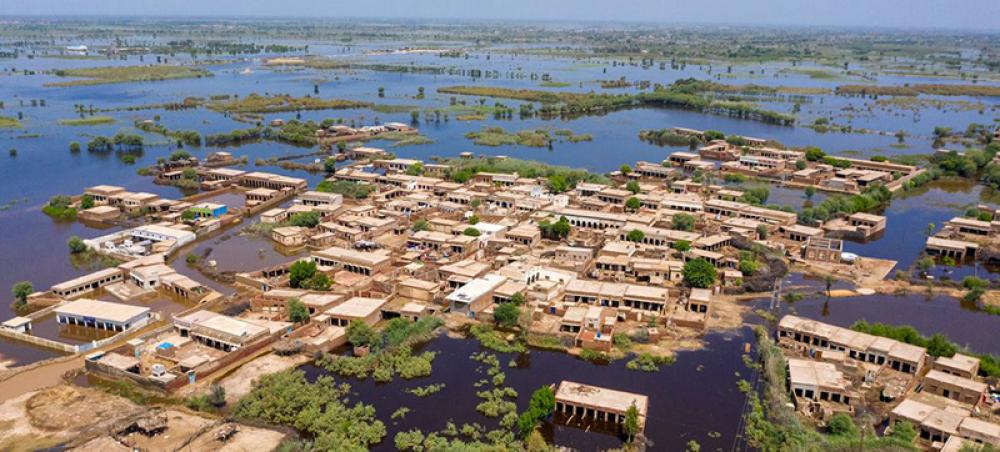Just Earth News | @justearthnews | 03 Sep 2022

Image: © UNICEF/Asad Zaidi
Islamabad: Pakistan's death toll due to ongoing flooding has now touched 1,265 as 57 more people died in the past 24 hours, media reports said.
Meanwhile, Sindh’s Dadu district continued to face the threat of widespread devastation on Saturday as a high-level flood passed through Sukkur Barrage and water levels persistently rose on Manchhar Lake.
According to a Flood Forecasting Division report, a high-level flood of 559,988 cusecs was passing through Sukkur Barrage at 6am today.
The situation worsened by afternoon, when Rafique Ahmed Jamali, an MNA from Dadu, told Dawn.com that floodwater had been gushing towards the district’s Johi tehsil, parts of which were already inundated.
The total number of people who have suffered injuries stands at 12,577, National Disaster Management Authority (NDMA) told Dawn News.
The scale of the humanitarian crisis in Pakistan is unprecedented, with a third of the country under water, UN humanitarians warned on Friday.
With more than 33 million people impacted, that represents 15 per cent of the total Pakistani population, said Dr. Palitha Mahipala, World Health Organization (WHO) Representative in the country.
Some “6.4 plus million people are in dire need of humanitarian aid”, he said, speaking from Islamabad to journalists in Geneva.
In the past few weeks, record monsoon rains dumped more than five times the 30-year average for rainfall in some provinces, killing more than 1,200 people and injuring over 6,000 since June. Nearly 400 children are among the fatalities.
More than a million homes lost
With 1.1 million houses washed away and vital infrastructure destroyed such as schools, UNICEF’s Representative in Pakistan, Abdullah Fadil, explained that “18,000 schools have been destroyed and thousands of schools are now fully shuttered… So that means children who have lost education for two years are also losing learning opportunities now.”
Besides the massive disruption to the education system, health facilities have been heavily impacted too, leaving the most vulnerable at risk.
The timing couldn’t be worse, as aid agencies have warned of an uptick in waterborne and deadly diseases, such as diarrhoea, cholera, dengue, or malaria.
Disease risk grows
Pakistan already had a high level of stunting, and the areas where that’s a major health issue, “are the same areas that are now flooded,” said Mr. Fadil. “The anticipation list of waterborne diseases - diarrhea, cholera, all the diseases you can imagine - will hit, and quite soon, so we need to be in place to respond to those as well.”
As rains continue and flooding likely worsens over the coming days, there is an urgent need to scale up disease surveillance, restore damaged health facilities, ensure sufficient medicines and health supplies to affected communities.
“Affected people have told our staff on the ground about their traumatic and scarring experiences as rain and floodwaters swept away their possessions in minutes,” said Matthew Saltmarsh, spokesperson for the UN Refugee Agency.
“Those who could, rushed to safety on higher ground without being able to rescue their belongings. Shelter, clean drinking water and food are among the most urgently needed items in the aftermath of the flood.”
Torrential monsoon rainfall has caused the Indus River to overflow, submerging land for tens of kilometers wide, according to recent images from the European Space Agency.
Crops and livestock have been lost having a significant impact on both livelihood and nutrition of afflicted communities.